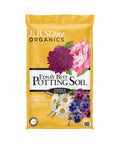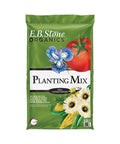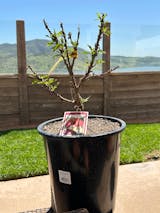Details
Easter Lily is an herbaceous perennial with an upright habit of growth. Its relatively coarse texture can be used to stand it apart from other garden plants with finer foliage.
Easter Lily should be cut back in late fall in preparation for winter. Deer don't particularly care for this plant and will usually leave it alone in favor of tastier treats. It has no significant negative characteristics.
Easter Lily is recommended for the following landscape applications:- Accent
- Mass Planting
- General Garden Use
- Container Planting
Features
Easter Lily features trumpet-shaped flowers rising above the foliage in early summer. The flowers are excellent for cutting. Its attractive large glossy sword-like leaves remain dark green in color.
Care
Planting & Growing
Easter Lily can grow to be about 3 feet tall at maturity, with a spread of 12 inches. When grown in masses or used as a bedding plant, individual plants should be spaced approximately 10 inches apart. It grows at a medium rate, and under ideal conditions can be expected to live for approximately 15 years.
This plant does best in full sun to partial shade. It requires an evenly moist well-drained soil for optimal growth. It is not particular as to soil type or pH. It is somewhat tolerant of urban pollution. Parts of it are known to be toxic to humans and animals, so care should be exercised in planting it around children and pets. It can be propagated by division; however, as a cultivated variety, be aware that it may be subject to certain restrictions or prohibitions on propagation.
Easter Lily is a fine choice for the garden, but it is also a good selection for planting in outdoor pots and containers. It is often used as a 'filler' in the 'spiller-thriller-filler' container combination, providing a mass of flowers and foliage against which the larger thriller plants stand out. Note that when growing plants in outdoor containers and baskets, they may require more frequent waterings than they would in the yard or garden.




































